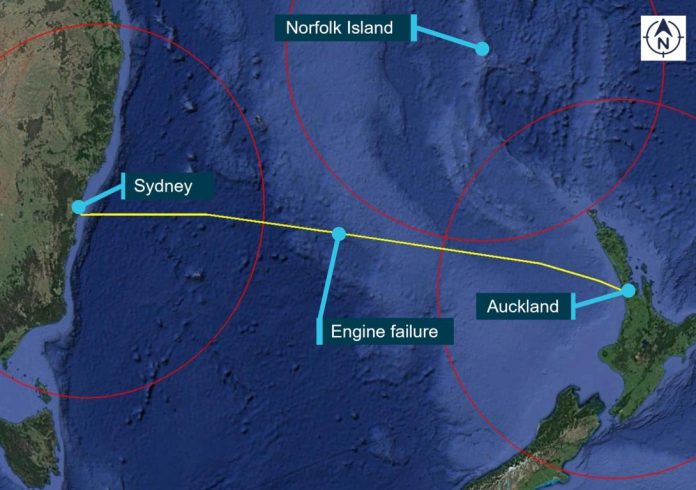
A Qantas crew demonstrates a textbook reaction to a serious in-flight emergency.
The Australian Transport Safety Bureau (ATSB) has published its report into the failure of the left engine on a Qantas flight from Auckland to Sydney. The ATSB said the crew’s actions highlighted ‘the benefits of effective decision-making and management of an unexpected situation’.
The Boeing 737-838 was about midway across the Tasman Sea, 1 hour and 24 minutes after take-off, when the crew heard a pop sound which was followed by the autopilot and auto throttle disengaging, with associated warning lights and horn. Their first reaction was to identify which engine had failed. They made a mayday call and requested an immediate descent to flight level 240. The cabin safety manager, who had felt an unusual transient yaw in the passenger cabin, called the flight deck and was told the engine had failed. On hearing this the manager spoke with the cabin crew team leader. A few minutes later the captain called the cabin safety manager to the flight deck for a more thorough briefing. The captain asked for cabin crew to contact the flight deck if they noticed any change in the cabin.
After running through non-normal checklists, the flight crew attempted a restart of the engine, without success. Just before top-of-descent, the captain called Brisbane Centre and downgraded their status to pan-pan. The crew had already decided to continue to Sydney, their original destination.
At the time of the engine failure Norfolk Island was the closest airport but several factors influenced the crew to continue to Sydney. Norfolk Island had a short runway (1,915 m), high terrain nearby and very limited facilities. Sydney had favourable weather, extensive emergency facilities and a straight-in approach to a 3,962-metre runway. The pilots agreed these counted for more than the 76 nm shorter flight to Norfolk Island. The ATSB investigation concurred, saying, ’the flight crew’s decision to continue to Sydney ensured no additional risk was added to an already high workload situation’.
The aircraft landed in Sydney without incident but was met by emergency services on the taxiway. Once cleared of any fire risk it continued as normal to the terminal. Only then did the captain tell the passengers the engine had failed. An earlier-in-flight announcement at top-of-descent had spoken of issues with one engine. From the ATSB report: ‘The captain thanked the passengers for their patience and understanding. In addition, the flight crew exited the flight deck and personally addressed each passenger as they disembarked.’
A tear-down of the engine found a radial drive shaft had failed, leading to a loss of fuel pressure that prevented the engine being restarted. In addition, the aircraft’s cockpit voice recorder had been overwritten when it was on the ground after the incident. Qantas has introduced a procedure to prevent this in future incidents.





I am very surprised Qantas didn’t have a procedure to prevent CVR overwrite before this.